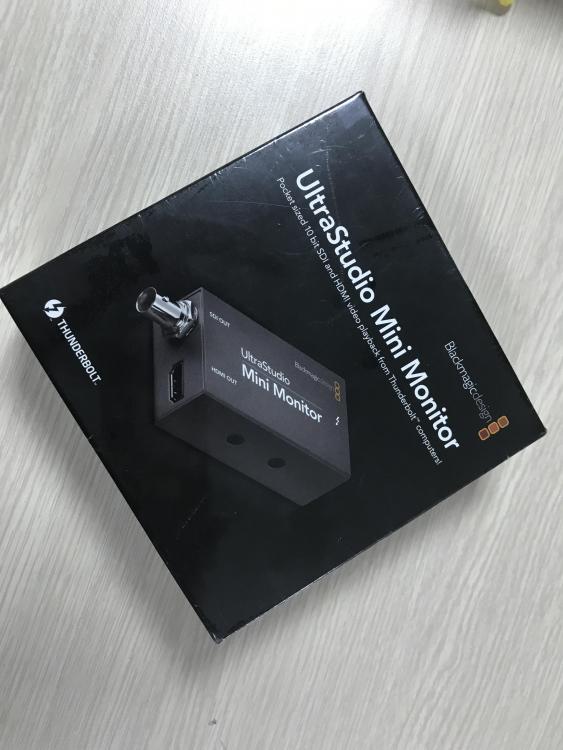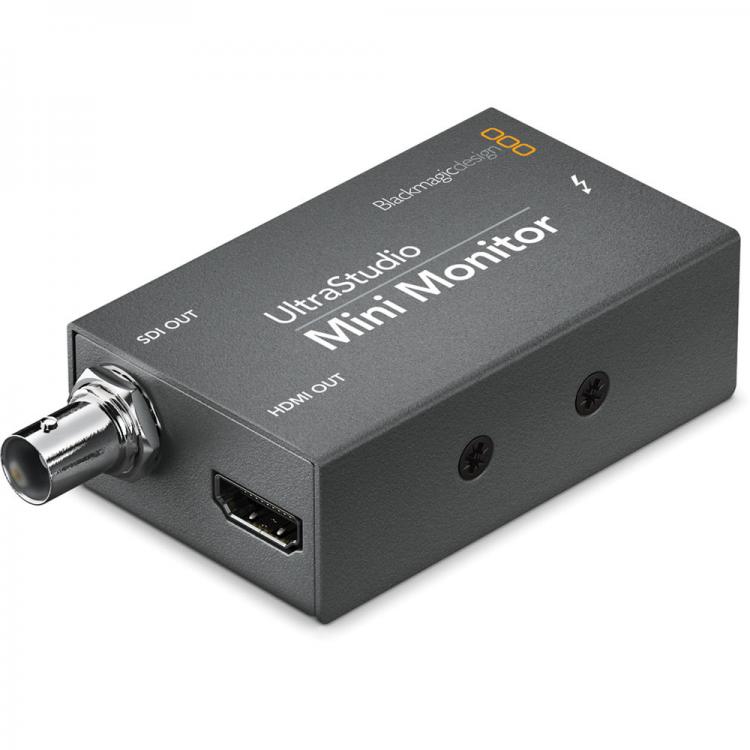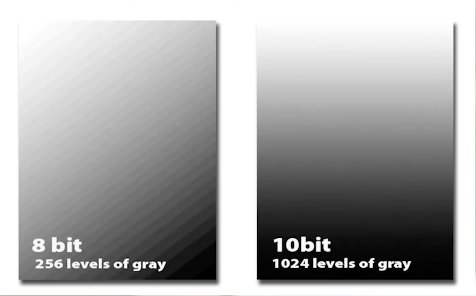-
Posts
6,355 -
Joined
-
Last visited
Content Type
Profiles
Forums
Articles
Everything posted by jonpais
-
So basically, if you've got a camera that shoots RAW or LOG, for around the cost of the GH5s, you can get yourself a Ninja Flame or Inferno, a BMD UltraStudio Mini Monitor and the best 55" OLED TV on the market and begin creating and enjoying HDR videos that blow the socks off anything today - less noise, macroblocking and other compression artifacts, crisper images and several stops more dynamic range.
-
-

Sony A7R3 users - THROW AWAY YOUR CANON LENSES!
jonpais replied to Andrew - EOSHD's topic in Cameras
When I was still teaching English, I’d sometimes teach job seeking skills. If I asked a student why they preferred one profession rather than another, invariably the answer would be ‘because it’s suitable to me.’ I would then have to explain that suitable has no meaning - suitable in what way? Was it because of the flexible working hours, the health benefits, the interaction with customers, being able to work outdoors, the vacation time...? If character is a trait or imperfection that is visible to the naked eye - for example, swirly bokeh, purple flaring, starbursts, and so on - what are the optical characteristics of the Canon lenses that appeal to you? -
Update: Samuel Bilodeau of Mystery Box once again insists we don't need the premium i/o connectors, just something that handles 1080. The Ultrastudio Mini Monitor will work DaVinci Resolve and FCP-X for HDR grading on a Ninja or Shogun. You don't need the 4K output, and you don't need the HDMI 2.0 that comes with the expensive I/O boxes, since you're telling the Ninja with the LUT how to interpret the input signal. DaVinci and FCP-X are more than happy to output a 1080 signal without adding the HDR flags on an HDMI 1.4 port. DaVinci makes no assumptions as to color space or EOTF unless you tell it to, and FCP-X will transmit a proper HDR signal without the flags if you hook it up this way. See our previous post on grading HDR with the Sumo 19 and the SmallHD 1703 P3X for more details on the workflow. Note: the Mini Monitor retails for just $145.
-
This FCP X HDR tutorial, published last month, seems to confirm the worst: AJA I/o 4K or BMD Ultrastudio 4K Extreme 3. (at the 3:00 mark) It's as though you just want to buy a garden hose, but in order to do so, you've got to put a mortgage down on the $500,000 house it's attached to.
-
What exactly is the point of advertising that the Ninja Inferno is also able to serve as a portable editing solution if the required converter costs triple or quadruple what you paid for the recorder/monitor itself? But that’s exactly what Atomos is claiming. I was on the phone with Atomos technical support in Melbourne this afternoon and was told that the only compatible converters are the AJA I/o 4K and Blackmagic Design Ultrastudio 4K Extreme – devices which run around $3,000 USD – more than I paid for my 2017 27″ 5K iMac for crying out loud! And in Vietnam, the BMD Ultrastudio Extreme 3 with Thunderbolt 3 interface will set you back an astronomical $3,600.00. As if that weren’t bad enough, I want to begin shooting 4K 60p V-Log Lite right away, but Atomos distributors here in Vietnam don’t even carry full HDMI 2.0 cables. At this point, you might legitimately wonder why I’m so eager to jump on the HDR bandwagon when hardly anyone even owns an HDR television – and lately, I’ve been questioning my own sanity as well. The reason is that, even setting spectacular dynamic range aside, when viewed on YouTube, HDR video is incomparably cleaner and crisper looking than SDR. Shadow areas that are smudged and overwhelmed with macroblocking and artifacts when viewed in 4K are, if not immaculate, greatly improved when uploaded in HDR. Textures that were faint become palpable as a result of the insanely higher local contrast of a true HDR display. So much so, in fact, that I’d argue that the difference in apparent resolution is more appreciable than between 1080p and 4K.
-
The way I understood it is that bit depth, or the number of 'shades' there are for each color channel, is what determines whether we see banding in an image. In 8 bit, there are 256 levels, in 10 bit, 1024 levels, which is why, when we push the image around in post, often (if not always!), the 10 bit image should hold up better. source
-
But isn’t that example demonstrating the relationship between banding and bit depth, not bit rate?
-
This is getting way off topic, but how is it that for all those years Panasonic was saying OIS was good enough or even better for video, when as it turns out, the m4/3 sensor was expressly designed with room for IBIS all along. So confusing!
-
Top 5 issues for video shooters: https://youtu.be/Qu7EV3KEfVA
-

Sony A7R3 users - THROW AWAY YOUR CANON LENSES!
jonpais replied to Andrew - EOSHD's topic in Cameras
Here’s a review from lenstip. -
Thanks @markr041 !
-

Sony A7R3 users - THROW AWAY YOUR CANON LENSES!
jonpais replied to Andrew - EOSHD's topic in Cameras
@Jurjen Drenth Photography Looking over your portfolio, it appears to me as though you actually prefer super crisp images, though it's hard to tell, since on your website, it's difficult if not impossible to view any of your work full size - everything is postage stamp size for some reason. No blur. No bokeh. No playing around with depth of field. Whatever. -
@Axel Just asking really. I haven't used Resolve in ages, though I keep updating the one I've got. hehe
-

My Son's First Video (Warning: might be offensive to most people).
jonpais replied to Mark Romero 2's topic in Cameras
@Mark Romero 2 super cute kid. you should spend more time with your family. -
Why is it then, that after jitter problems with the Zhiyun Crane, round-tripping between Resolve and FCP has been one of the most consulted posts in my blog for years?
-

Sony A7R3 users - THROW AWAY YOUR CANON LENSES!
jonpais replied to Andrew - EOSHD's topic in Cameras
@Jurjen Drenth Photography Perhaps because Sigma offers lenses with unique parameters with solid build quality, great image quality, little chromatic aberration, fast, accurate and silent autofocus, low distortion and lack of problems with vignetting, all at a price that is substantially lower than that of the OEMs? Do you have a video you'd like to share? -
The thought has occurred to me too, believe me! On the other hand, in Apple's white paper, they do say that third party hardware is necessary for monitoring HDR, so I'm assuming something must work... Alexis Van Hurkman did not respond to my query around a month ago. Not a single AJA dealer of the half dozen I contacted here in Vietnam bothered to respond either. Hoping to hear back from Atomos soon. I've got the feeling that (1) not many are shooting and grading HLG for HDR delivery and (2) almost none of those editing HDR projects of any kind are using Final Cut Pro. Rant time? Why is it easier to find out the habitat of brain-eating amoeba and the symptoms of PMA than to find out what damned connector is needed for the Ninja?
-
I wrote Blackmagic Design and AJA last week, telling them I want to use the Ninja Inferno as a grading monitor. I haven’t heard back from Aja yet, but here’s the response I got from BMD: Hi Jon, Thank you for your mail . The list of capture devices that can output HDR are 1. UltraStudio 4k Extreme 3 2. UltraStudio 4k Extreme 3. DeckLink 4K Extreme 12G 4. DeckLink Mini Monitor 4K As far as I know, Final Cut Pro has stopped support for quite sometime . You may want to check with Apple on this . Louis Wang Manager, Professional Services Prices for the four models range from a whopping $3,000 to less than $200, and I was given no further information about their suitability. And FWIW, a local BMD reseller, Pixel Factory, recommended the Ultrastudio Mini Monitor, a device costing only $137.00! Naturally, when I asked whether I could bring my Ninja and MacBook to their shop to try it out, they said they're out of stock. hehe Maybe I've been going about it the wrong way. First, I tried contacting several authorities who've used the Ninja as a grading monitor, but either received no response, a vague reply or a link to AJA's webpage! So I just contacted Atomos. We'll see what they've got to say...
-
Precisely!
-
@Matthew Hartman Couldn’t agree with you more about manual focus. Which is one reason I’ve championed the Veydra mini primes. I’m often asked how they compare to the Leicas, but honestly, they hold up quite well, and a couple of nice focus pulls in a documentary or narrative work far outweigh a few extra millimeters per inch of resolution, if they exist at all. Even for head shots during interviews, I much prefer the look of a subject occassionally going out of focus as they move about - which to me is beautiful, btw - to face tracking AF. In an ideal world, you’d have a lens with both instantaneous AF and the ability to pull off rack focus, but most solutions, like manual clutch, cannot compare to a mechanical lens. That’s just my preference, btw - I realize everyone has different needs!
-
Shouldn't this be in one of the dozen or so GH5s threads? Could you at least share a clip?
-
I almost said mid-budget cinema camera. ?
-
In spite of @Matthew Hartman‘s claims to the contrary, this video, shot in HLG, shows just how good 4K HDR uploaded to YouTube can look. Of course, to truly see how excellent it is, it helps to watch on an LG OLED set. And I've seen dozens of other videos on the HDR Channel that are equally jaw-dropping. Furthermore, it is not only spectacles that look good in high dynamic range: documentaries as brilliant as Chef's Table, delivered in Dolby Vision on Netflix, also benefit from HDR. Not sure why some people react so strongly against 10-bit. Whether or not 99% of the world is 8-bit is irrelevant.10-bit is the protocol for HDR. Many still shoot 8-bit on the GH5, I shoot 10-bit - I don't see the problem. Having a choice of frame rates, codecs, photo styles and bit rates is a good thing. He should know that, since one of the cameras he's considering purchasing, the Ursa Mini Pro 4.6, shoots 10-bit and 12-bit -so no need to look down on Panasonic.




